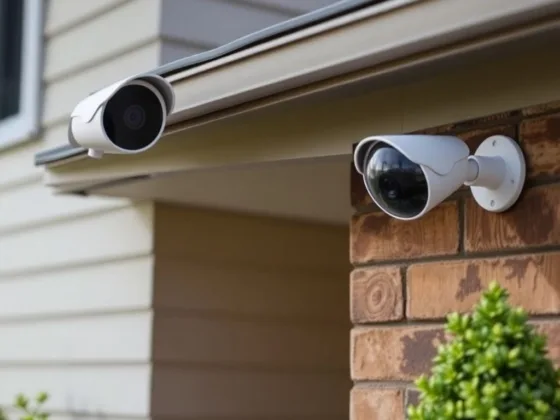Table of Contents Show
In today’s world, maintaining a healthy indoor environment has become increasingly important for our overall well-being.

Air purifiers, humidifiers, and dehumidifiers are three popular devices that can help improve air quality and comfort within our homes. Each of these devices serves a unique purpose: air purifiers clean the air by removing pollutants and allergens, humidifiers add moisture to dry indoor air, and dehumidifiers remove excess moisture to prevent mold and mildew growth.
Because the functionalities of these devices are so different, it is essential to understand their distinctions in order to make an informed decision about which one is right for your home. Choosing the wrong device can not only be a waste of money but also fail to address the specific air quality issues you’re facing. The goal of this article is to provide a comprehensive comparison of air purifiers, humidifiers, and dehumidifiers, highlighting their unique features, functions, and use cases.
By the end of this article, you should have a clearer understanding of these devices, enabling you to determine which one is best suited to address your specific needs and create a healthier, more comfortable living environment.
Air Purifiers
Air purifiers are devices designed to cleanse the air by capturing and removing airborne contaminants, such as dust, pollen, pet dander, mold spores, and bacteria.
Their primary purpose is to improve indoor air quality and create a healthier living environment, particularly for those who suffer from allergies or respiratory issues. There are several features of air purifiers, each utilizing different filtration technologies to address specific air quality concerns:
- HEPA filters: High-Efficiency Particulate Air (HEPA) filters are capable of capturing 99.97% of particles as small as 0.3 microns, making them highly effective at trapping allergens, dust, and other airborne pollutants.
- Activated carbon filters: These filters are designed to remove odors, smoke, and volatile organic compounds (VOCs) by adsorbing gases and chemicals onto their porous surfaces.
- UV-C light technology: Ultraviolet (UV) light can inactivate microorganisms such as bacteria, viruses, and mold spores, providing an additional layer of protection against airborne pathogens.
- Ionizers: Ionizing air purifiers emit charged particles that attach to airborne contaminants, causing them to clump together and become easier to capture by filters or settle out of the air.
Common use Cases for Air Purifiers Include:
- Allergy relief: Air purifiers can significantly reduce allergens in the air, providing relief for individuals suffering from allergies.
- Asthma management: By removing airborne triggers such as dust, pollen, and pet dander, air purifiers can help manage asthma symptoms and improve respiratory health.
- Pet owners: Pet dander, hair, and odors can be effectively removed by air purifiers, making them an essential addition for pet owners.
- Smoke and odor elimination: Air purifiers with activated carbon filters can efficiently remove smoke and unpleasant odors from the air, improving overall indoor air quality.
Humidifiers
Humidifiers are devices designed to increase the humidity level in a room or an entire building by adding moisture to the air.
Their primary purpose is to maintain a comfortable indoor environment, particularly during colder months when indoor air tends to be drier due to heating systems.
Types of Humidifiers
- Evaporative humidifiers: These devices use a fan to blow air over a wet wick, filter, or pad, which evaporates the water and releases moisture into the air. Evaporative humidifiers are self-regulating, as they only release as much moisture as the air can hold.
- Ultrasonic humidifiers: Ultrasonic humidifiers use high-frequency vibrations to generate a fine water mist, which is then dispersed into the air. They are typically quieter and more energy-efficient than other types of humidifiers.
- Steam vaporizers: Steam vaporizers heat water to create steam, which is then released into the air. While these humidifiers can be effective, they also pose a risk of burns due to the hot water and steam they produce.
Common use Cases for Humidifiers Include:
- Alleviating dry skin and respiratory issues: Maintaining optimal humidity levels can help alleviate dry skin, chapped lips, and respiratory problems associated with dry air, such as sinus congestion and sore throats.
- Reducing static electricity: Proper humidity levels can reduce the occurrence of static electricity, which can cause discomfort and damage to sensitive electronic devices.
- Improving indoor plant health: Many indoor plants thrive in a more humid environment, so using a humidifier can help maintain the health and growth of your indoor garden.
- Preventing damage to wooden furniture and instruments: Dry air can cause wood to shrink and crack, leading to damage to wooden furniture, flooring, and musical instruments. Using a humidifier can help maintain the integrity of these items by preventing excessive dryness.
Read Also:
Dehumidifiers
Dehumidifiers are devices designed to remove excess moisture from the air, effectively lowering humidity levels in a room or building. Their primary purpose is to create a more comfortable and healthier indoor environment, particularly in regions with high humidity or during warmer months when indoor air tends to be more humid.
Two Main Types of Dehumidifiers
- Refrigerant dehumidifiers: These devices use a refrigeration system to cool the air, causing moisture to condense and collect in a reservoir or drain. Once the moisture is removed, the dry air is rewarmed and released back into the room.
- Desiccant dehumidifiers: Desiccant dehumidifiers use a moisture-absorbing material, such as silica gel or a specialized rotor, to extract moisture from the air. The desiccant is then heated to release the collected moisture, which is either collected in a reservoir or drained.
Common use Cases for Dehumidifiers Include:
- Preventing mold and mildew growth: By maintaining optimal humidity levels, dehumidifiers can help prevent the growth of mold and mildew, which thrive in damp environments and can cause structural damage and health issues.
- Reducing allergens and asthma triggers: Dehumidifiers can help reduce the presence of allergens such as dust mites and mold spores, which can trigger asthma and allergy symptoms.

- Protecting electronics and appliances: Excess humidity can cause corrosion and damage to electronics and appliances. Using a dehumidifier can help protect these items by maintaining a more balanced humidity level.
- Improving overall indoor air quality: By removing excess moisture from the air, dehumidifiers can help improve overall indoor air quality, leading to a more comfortable and healthier living environment.
Assessing your Home Environment:
- Identifying specific issues and concerns: Before selecting a device, it’s important to identify the specific issues or concerns you wish to address in your home. For example, if you suffer from allergies, an air purifier may be the best choice to remove allergens from the air. If you’re dealing with excessively dry or humid air, a humidifier or dehumidifier might be more appropriate.
- Considering room size and device capacity: When choosing a device, it’s important to consider the size of the room or area where it will be used. Each device has a specific capacity or coverage area, so ensure that the one you select is suitable for your needs.
Evaluating your Budget and Maintenance Requirements:
Before making a decision, consider your budget and the ongoing maintenance costs of the device. Air purifiers, humidifiers, and dehumidifiers can vary in price, and some may require more frequent filter replacements or maintenance than others. Be sure to factor in these costs when making your decision.
Comparing Features and Benefits of Different Devices:
After assessing your home environment and considering your budget, compare the features and benefits of various air purifiers, humidifiers, and dehumidifiers.
This will help you make an informed decision on which device is best suited to your needs. Consider factors such as noise levels, energy efficiency, ease of use, and any additional features (e.g., timers, built-in hygrometers, or remote controls) that may enhance the device’s functionality and convenience.
Conclusion
Selecting the right device for your home depends on your specific needs and circumstances. It’s essential to carefully consider the unique factors of your indoor environment, such as the presence of allergens or the level of humidity, before deciding on which device is most suitable for you.
Whether you choose an air purifier, humidifier, or dehumidifier, investing in a device that helps improve the air quality in your home can have a significant impact on your health, comfort, and quality of life. Take the time to evaluate your needs and select a device that will best serve you and your household.











